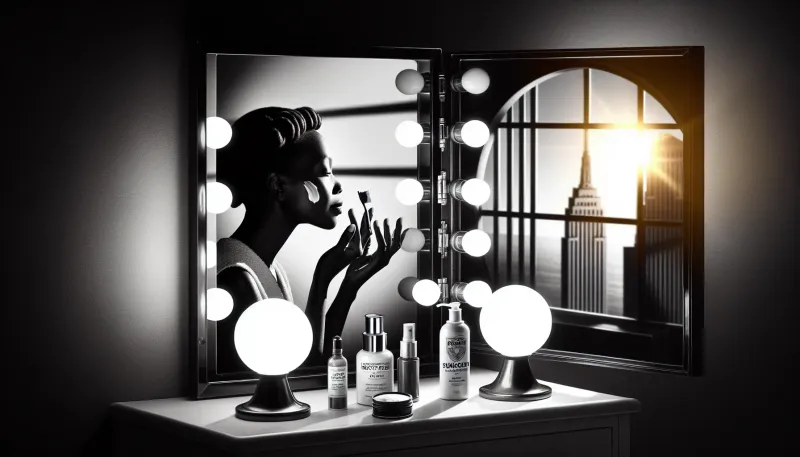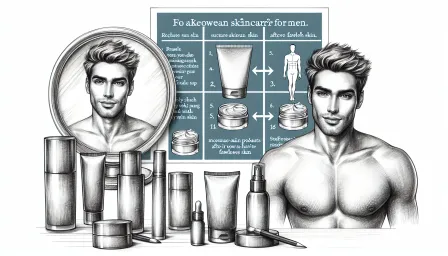Sunscreen Before or After Moisturizer: Expert Skincare Tips

Discover expert tips on whether to apply sunscreen before or after moisturizer. Find out how to optimize your skincare routine for maximum protection and hydration.
When it comes to skincare, a question that often arises is whether to apply sunscreen before or after moisturizer. Both products are crucial for maintaining healthy skin, but their order of application can affect their efficacy.
In this comprehensive guide, we will delve into expert skincare tips to help you optimize your routine, ensuring your skin stays hydrated and protected from the harmful effects of the sun.
Why Skincare Order Matters
The order in which you apply your skincare products can profoundly impact their effectiveness. Skincare routines are not just about the products you use, but also how you layer them. This holds especially true for sunscreen and moisturizer.
The Role of Sunscreen
Sunscreen is designed to protect your skin from ultraviolet (UV) radiation, which can cause premature aging, sunburn, and an increased risk of skin cancer. There are two types of sunscreens: chemical and physical (also known as mineral) sunscreens.
- Chemical Sunscreen: Works by absorbing UV radiation and converting it into heat, which is then released from the skin.
- Physical Sunscreen: Contains active mineral ingredients like zinc oxide or titanium dioxide that sit on top of the skin and reflect UV rays away.
The Importance of Moisturizer
Moisturizers are formulated to hydrate the skin and help maintain its natural barrier. They prevent dryness, keep the skin soft, and can enhance the overall effectiveness of your skincare routine. There are different types of moisturizers to suit various skin types:
- Humectants: Draw moisture from the environment into the skin (e.g., glycerin, hyaluronic acid).
- Emollients: Soften and smooth the skin (e.g., plant oils, fatty acids).
- Occlusives: Create a barrier to lock in moisture (e.g., petrolatum, lanolin).
Application Order: Sunscreen Before or After Moisturizer?
One of the most common debates in skincare is whether to apply sunscreen before or after moisturizer. The general rule of thumb supported by dermatologists is:
For Chemical Sunscreen
Apply chemical sunscreen before moisturizer. Chemical sunscreens need to be absorbed into the skin to be effective. If you apply the moisturizer first, it may create a barrier that prevents the sunscreen from penetrating properly.
For Physical (Mineral) Sunscreen
Apply physical sunscreen after moisturizer. Physical sunscreens act by sitting on top of the skin to reflect UV rays. Applying moisturizer first does not interfere with the protective layer formed by physical sunscreen.
Steps for an Optimal Skincare Routine
To maximize the effectiveness of your skincare routine, follow these steps:
1. Cleanser
Start by using a gentle cleanser to remove dirt, oil, and any impurities from your skin.
2. Toner
Apply a toning product to balance your skin’s pH levels and prepare it for the subsequent steps.
3. Treatment Serums
Use treatment-specific serums tailored to your skin concerns, such as anti-aging, acne treatment, or brightening serums.
4. Moisturizer
Select a moisturizer suitable for your skin type to ensure it stays hydrated and protected throughout the day.
5. Sunscreen
Finally, apply sunscreen as the last step in your morning routine. Ensure you use enough product to cover all exposed areas of your skin.
Expert Tips for Maximizing Sunscreen and Moisturizer Benefits
Here are additional expert tips to enhance your skincare routine:
Tip 1: Wait Between Applications
Allow a few minutes for each product to absorb fully before applying the next one. This is particularly important when layering chemical sunscreen after your serums and moisturizer.
Tip 2: Reapply Sunscreen
Remember that sunscreen should be reapplied every two hours when exposed to sunlight. If you are swimming or sweating, opt for a water-resistant formula and reapply more frequently.
Tip 3: Consider SPF in Your Moisturizer
Many modern moisturizers contain SPF. While this can be convenient for daily use, it may not be sufficient for extended sun exposure. Always ensure to use a dedicated broad-spectrum sunscreen for better protection.
Tip 4: Customize Based on Skin Type
Adjust your skincare routine according to your skin type. For oily skin, opt for non-comedogenic products. For dry skin, choose richer moisturizing formulas combined with physical sunscreen.
Common Mistakes to Avoid
Being aware of common mistakes can help you streamline your skincare routine effectively:
Using Too Little Sunscreen
Ensure you apply enough sunscreen to cover all exposed areas. Most people don't use the recommended amount, which compromises protection.
Skipping Sunscreen on Cloudy Days
UV rays can penetrate clouds. It's crucial to wear sunscreen daily, regardless of the weather.
Overloading on Products
Avoid the temptation to use too many products at once, which can irritate the skin. Stick to a simple, effective routine.
Summary
Understanding whether to apply sunscreen before or after moisturizer is essential for maintaining effective sun protection and skin hydration. For chemical sunscreens, apply before moisturizer to ensure proper absorption, and for physical sunscreens, apply after. By following the expert tips and avoiding common mistakes outlined in this guide, you can optimize your daily skincare routine for healthier, glowing skin.



























